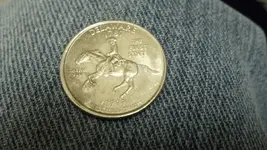There's two kinds of profiteering people: those who understand how a market / supply & demand work, and those who don't.
Those who understand the market see the value and added profit of selling a valuable item little by little, regardless of what quantity they have. If you keep the supply low, the demand will stay the same or rise. When you flood the market with bulk quantities, each and every additional seller must lower their prices to stay competitive. The diamond market is a perfect example. Diamonds are actually more common than people think; but the diamond consortiums maintain a high logarithmic market value per karat because they control their (and monitor each other's) contributions to the diamond market. This is why those cash-for-gold places pay pennies on the dollar for diamonds. If you want true value in gemstone investment, turn to colored gemstones, although I must say that even emeralds aren't worth nearly as much as they used to be. It's more into the exotic gemstones, like tanzanite, certain opals, rhodochrosites, etc.
Error collecting in regards to die cracks and grease fillers are more a collector's market anymore. Only the rarest of errors have high value anymore: re-punched mint marks & dates, overdates and over-mint marks, definitive doubling (where coins were actually struck twice and not slightly off the pre-strike), planchet errors and heavy rotations. Of course, these errors grow in value as they age, so even state quarter errors will gradually increase their values as time passes and fewer of them are found. Grading offers a sort of professional error verification that also augments error value.
I always wondered what "VAM" stood for. Thanks for sharing that tidbit. And now one of my own: there is a great website for penny errors and varieties. You can read up on them here:
The Lincoln Cent Resource




